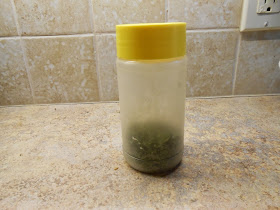http://windyacresnaturalfarm.blogspot.com/2013/07/best-way-to-keep-basil-fresh.html
And, here is one I wrote on how I prune it to keep it growing and producing leaves:
http://windyacresnaturalfarm.blogspot.com/2012/07/overgrown-basil.html
Making pesto is a must if you grow a lot of basil. I shared my recipe and method in this entry:
http://windyacresnaturalfarm.blogspot.com/2011/08/basil-pesto.html
Here is one on saving basil seed.
http://windyacresnaturalfarm.blogspot.com/2012/11/saving-basil-seed.html
And, finally, one on the best way I have found to dry basil.
http://windyacresnaturalfarm.blogspot.com/2011/10/dried-basil.html
I was quite amazed when I searched my blog for "basil" and found that I had written so many entries concerning that topic! Well, here is ONE MORE! But, you can consider it an extension of the one on drying basil above.
This year, I've had an over-abundance of basil. We are no longer in a drought where we live here in Oklahoma. The early part of the summer brought us a lot of rain and we've had very few days of 100+ temperatures. Most of the summer has seen temperatures in the upper 80s and 90s. So, it has been great growing conditions for this particular herb. I've had so much of it, in fact, that much of the time, I've had to compost most of what I had leftover from the farmers' market.
However, I have dried quite a bit of it. Once it is dried, you can simply put it in zip-lock bags and store it in your cupboard. But, since most recipes call for dried herbs by the teaspoon, tablespoon, etc., then you need to crush the leaves into small pieces so they can be measured.
Here's the solution I have come up with for this task.....a coffee grinder. I use this grinder solely for herbs; mainly basil, mint and lemon verbena.
You have to be careful and not get carried away. Otherwise, you end up with basil "powder". However, if you just pulse the basil leaves a few pulses at a time, then it works pretty well.
Here's what to do. Take a few dried leaves, like this.
Put them in the grinder and pulse a few times. The ones below probably need another pulse or two.
Then put them in a spice jar. I usually save empty spice jars just for this purpose.
Finally, be sure to label the jar with what is inside. I can't tell you how many times, I have neglected to do this thinking that I would surely remember what it was. Then, six months down the road, I couldn't remember and had to taste the contents to see what it was.



























